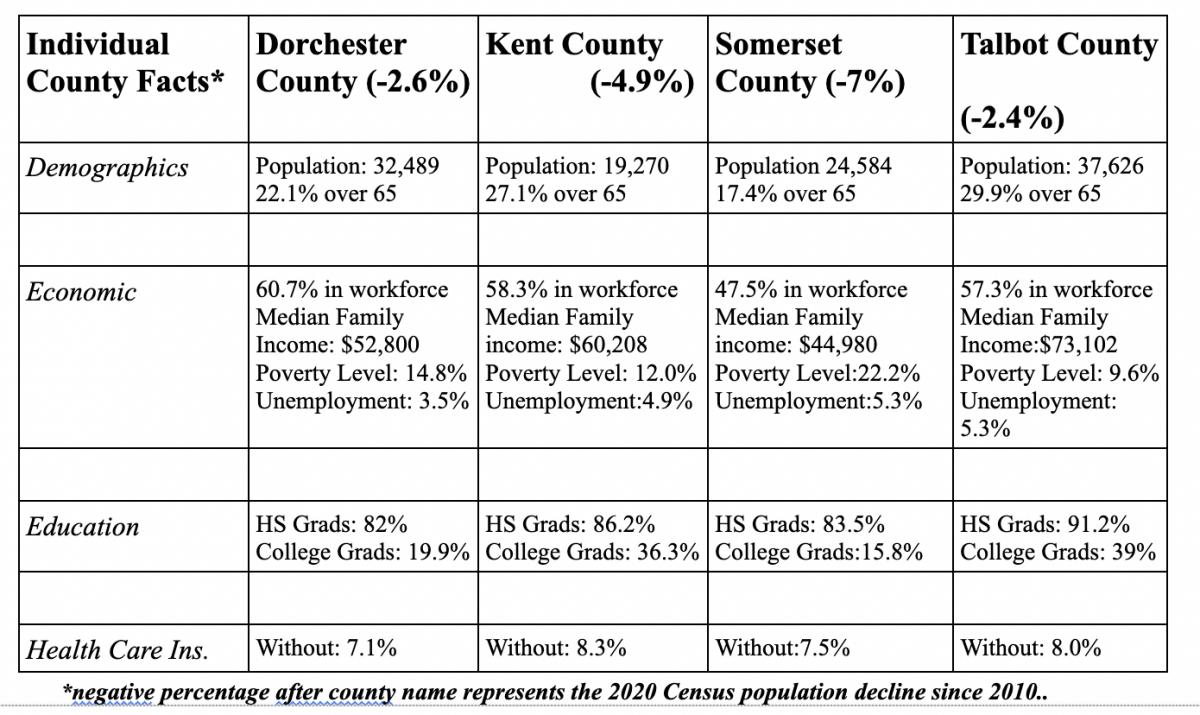Prior to the onslaught of the COVID-19 Pandemic, rural areas of the United States were seeing modest economic growth, while most populations stayed at 2010 levels. The national total of rural residents was some 46 million or about 14% of the US total., These statistics rather sharply contrast with the urban data, which showed considerably higher increases in both categories.
In terms of poverty rates, there was a similar result. Rural poverty rates declined from a high of 18.4% (2013) to 16.1% (2018), still higher than urban rates at the time, on average about 12.6%.
And then Covid struck in the winter of 2019 – 2020, leading eventually to over 1 million American deaths and a national economic crisis that only began to abate in spring 2022. In July 2022 the economic concern is inflation. The spread of Covid infections and deaths over the past 2 plus years has also differed at different times in rural and urban regions
Initially, the cities were harder hit, while the non-metro regions reflected a more predictable 14% of national cases and 11% of the deaths. These figures eventually rose to 21% and 27% respectively in 2021.
The general explanations offered for the later, persistent spikes in rural areas, include: (1) more residents with underlying health conditions, (2) fewer people with health insurance, (3) longer distances to hospitals and (4) substantially fewer vaccinated/boosted people. Other contributing factors creating “super spreader” situations in both city and farm country, has been crowded work and home environments and too many mask-less people at indoor holiday and other events.
Yes, the Pandemic severely affected lives in Kent, Somerset, Dorchester and Talbot Counties, but it only exacerbated conditions existing in the four. It is those conditions that over years can and do lead to shrinking demographics. The following chart provides background data on each county, offering facts to review and tentative answers to be offered.
The following provides four important national and Maryland data points from the 2020 Census to provide a partial basis for comparison with the counties.
One common measure of a community’s health and well being is its “viability”, that is will it continue to work as a functioning place for people to live. The answer is “it depends” because age, health, job opportunities, available training and education, affordable housing and quality of life all affect residents’ opinions.
All four counties are losing residents and those remaining are, to a significant extent, senior citizens. These are not, per se, encouraging viability factors. Economic development in all four is something of an issue, but particularly for Dorchester, Somerset and Kent, as is evident by their lagging median incomes.
These three have also lost businesses, i.e., employers, that have not been replaced, nor have many new ventures opened. Affecting the latter, may be the level of skill sets and experience offered by local work forces.
The relatively high poverty rates and median ages translate into heavier demand for county, city and town public services. In 2022, the costs of providing them are rising, particularly for public school systems. Shrinking numbers of taxpayers, clearly impact public revenue streams.
It is clear, these counties need to understand the dimensions of the work required to reverse current adverse demographic trends and to satisfy the shifting needs of their populations in the decades ahead. I have no doubt their leaders comprehend the work that lies ahead and will meet the viability tests.
Tom Timberman is an Army vet, lawyer, former senior Foreign Service officer, adjunct professor at GWU, and economic development team leader or foreign government advisor in war zones. He is the author of four books, lectures locally and at US and European universities. He and his wife are 24 year residents of Kent County.






Heather says
Very informative and factual. This should be published in the Star Democrat!
Reed Fawell 3 says
Imagine what inflation, and related food and gas prices, are doing right now to these four counties!
Teresa Westbrook says
Curious how those with secondary homes comes into play in these statistics, e.g., homeowners who are residents of other counties/states who live in these counties part-time. Has that # increased during this same period?
DANNA MURPHY MURDEN says
I thought the same thing. I live in a community that has seen a lot of turnover in property owners.
Absolutely amazing how many are second homes or Short Term Rentals.
wendy schied says
I work in retail and I can’t tell you how many times I hear “we just moved here” or “this is our 2nd home”.
Wilson Wyatt says
When I first came to the Eastern Shore, in the early-1980s, I came on weekends…lured by the then-popular Chesapeake attractions of boating, fishing, and hunting and the camaraderie with similar friends who did the same. We also enjoyed the unique peacefulness and friendliness of this rural region. Many of us came here to escape the congestion of the Washington, D.C. metropolitan area. My wife and I moved here in the ’90s. Over these years I’ve sensed that the number of people lured here by boating, fishing, and hunting has lessened noticeably, while the general age of residents has increased. Each of these popular endeavors–boating, fishing, and hunting (and all the businesses they support)–seems to have fewer numbers, and for very different economic, societal, and environmental reasons. Regardless, I’m convinced they contribute to the surprising reduction of population in the four Delmarva counties mentioned in this article. As a Chesapeake destination, change is definitely in the wind. I think this is an important subject for everyone here.
Reed Fawell 3 says
Yes, indeed. And I suggest these numbers in this article suggest that the rich (the affluent) here, including owners of second homes, are doing just fine and dandy here, while everyone else are watching the quality and wealth of their lives submerging under the waves of false progress rendering their lives dependent and meaningless, along with the rampant collapse of their culture. We are sinking into the norms and dysfunctions of typical third world societies, at the very time that we should be thriving over here on the Eastern Shore. Why are we so passive and afraid?
Charles E. Yonkers says
In 1970, economist Albert O. Hirschmann wrote a short book, “Exit, Voice,Loyalty: Responses to Decline in Firms, Organizations, and States” (Harvard University Press, Cambridge, MA, 1970). It poses the same issues that this excellent but sobering report on our Eastern Shore demographics suggest. Query: Do I leave, do I speak out and work to revive what Mr. Timberman calls our area’s “viability,” or do I simply stick it out because of…what? – inertia, lack of resources/ideas, energy, complexity, etc. ? Young people’s choices may be the leading indicator or where things are going. And what our disproportionately-large older component decides to do counts heavily too. Happily, there are many positive signs, but the threats of decline gale out at us.
Stephen Schaare says
Please factor in the scarcity and accessibility of quality healthcare here in Talbot.
Try finding a Doctor able to take on a new patient, or a Doctor at all. So many new and shiny buildings with skeleton crews. Scheduling an important test or exam can take months.
Reed Fawell 3 says
Go to the emergency room of Easton’s Hospital, and see how long it takes to get help, if you want to prove Stephan Schaare’s assertion above.
Damon says
So I don’t get it! What am I missing? The Talbot County statistics illustrate a -2.4% decrease in population over the past decade. Why then are developers clamoring to clear even more land and build more new homes in a planned community such as Lakeside in Trappe? The proposed Lakeside development of 2500 dwellings, once completed and fully occupied (using conservative figure of 2 people per household), would add 5,000+ new residents to Talbot County. This would represent a Talbot County population increase of more than 13% and the Lakeside community is but one of several in the news of late. Where are these people supposed to be coming from? The developers are obviously incentivized and in business to make money. Something doesn’t seem to make sense.
Reed Fawell 3 says
Huge amounts of dense small lot single use residential tract subdivisions on fragile lands and waters with inferior interior and exterior access and waste disposal do not generate wealth or health. Instead such subdivisions destroy wealth and health of people that fail to serve, along with the established communities they invade. This is called sprawl along with massive road serviced strip commercial it generates on limited access interstate and intra regional roads that also plague the communities they invade, while sucking the life out of formerly healthy rural communities and smaller towns in the region. Here, on the Eastern Shore, given its constricting and fragile geography of land and water, and its culture, and its historic and special uses of the geography, the plague of such invasions are put on steroids, save for the elite. The Kent Island corridor is prime example, a no where place, save for the owners of gas stations, fast foods places and mattress discounters. And its coming our way. Yet, now new people come because there is no where else to go they can afford on the far side of bridge. Meanwhile the costs here also explode now, as the livability, services, and quality of life of those already here plunge, save only for affluent empty nesters and Airbnb invaders whose wealth and lifestyle insulate them the collapse of communities around them. This now is undeniable. It is plain to see all around us now, growing daily without hope in sight. But it does not have to be this way. We can turn it around. But will we even try? Or just keep arguing with each other about pronouns and ancestors?
Mike Leonard says
The best way to make rural counties stop losing residents is for these counties and their cities/towns to make themselves attractive places to live for YOUNG (under 40ish) people who
1) do NOT work remotely, but rather, in-person for a business that has a connection to and impact on the local economies
2) do NOT have family money and are NOT living here at a family home that they don’t actually own or manage
That’s it.
In other words: rural counties that attract young people who actually have to make their own future for themselves, by interacting with the local resources and people, will survive thrive and grow by virtue of everything that brings.